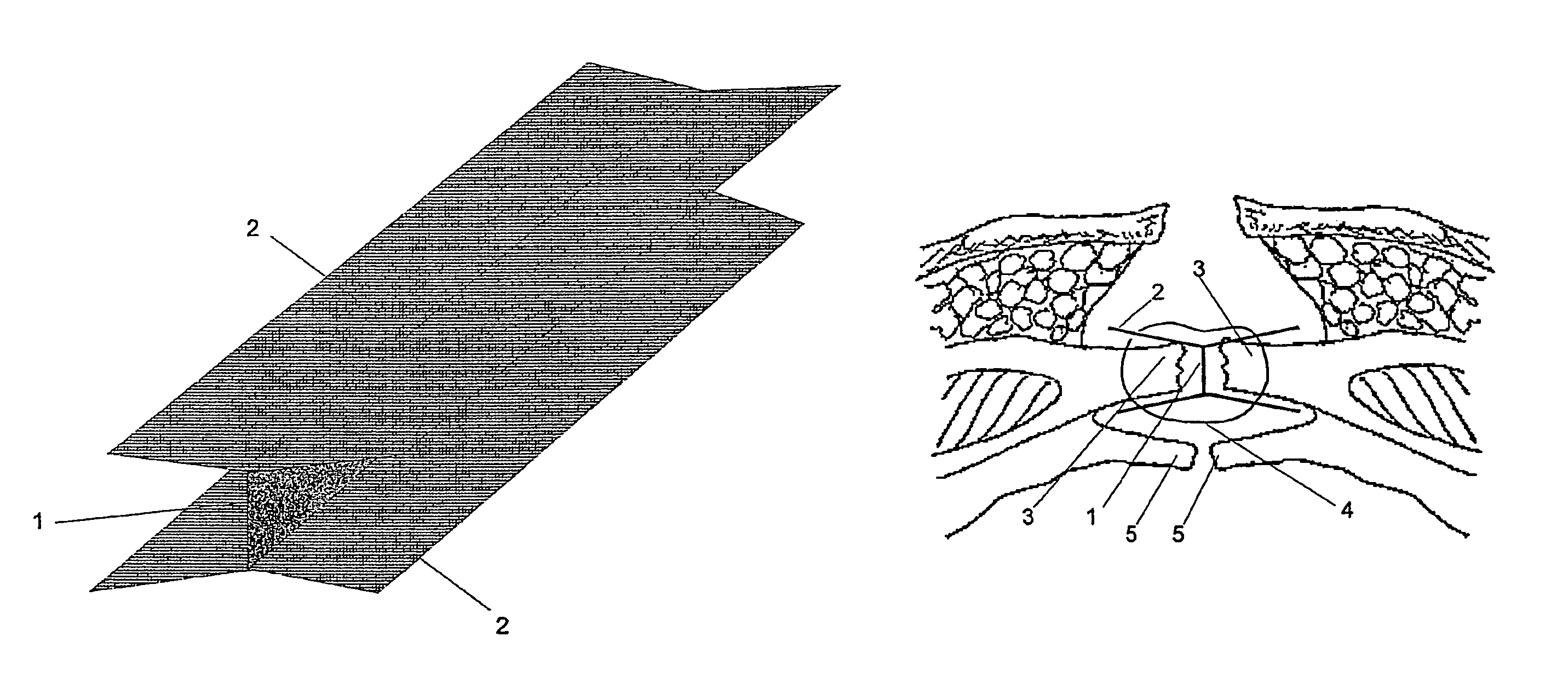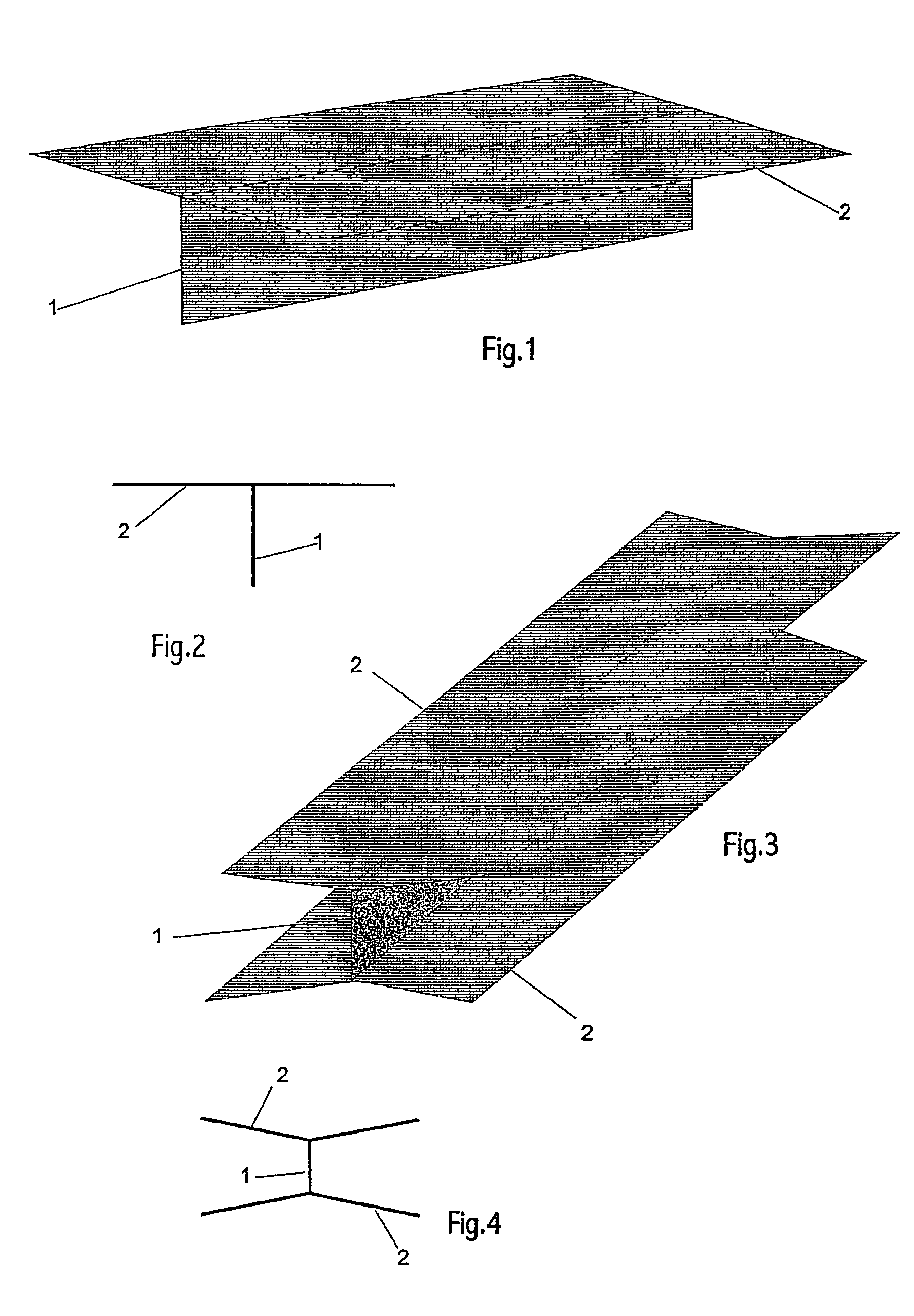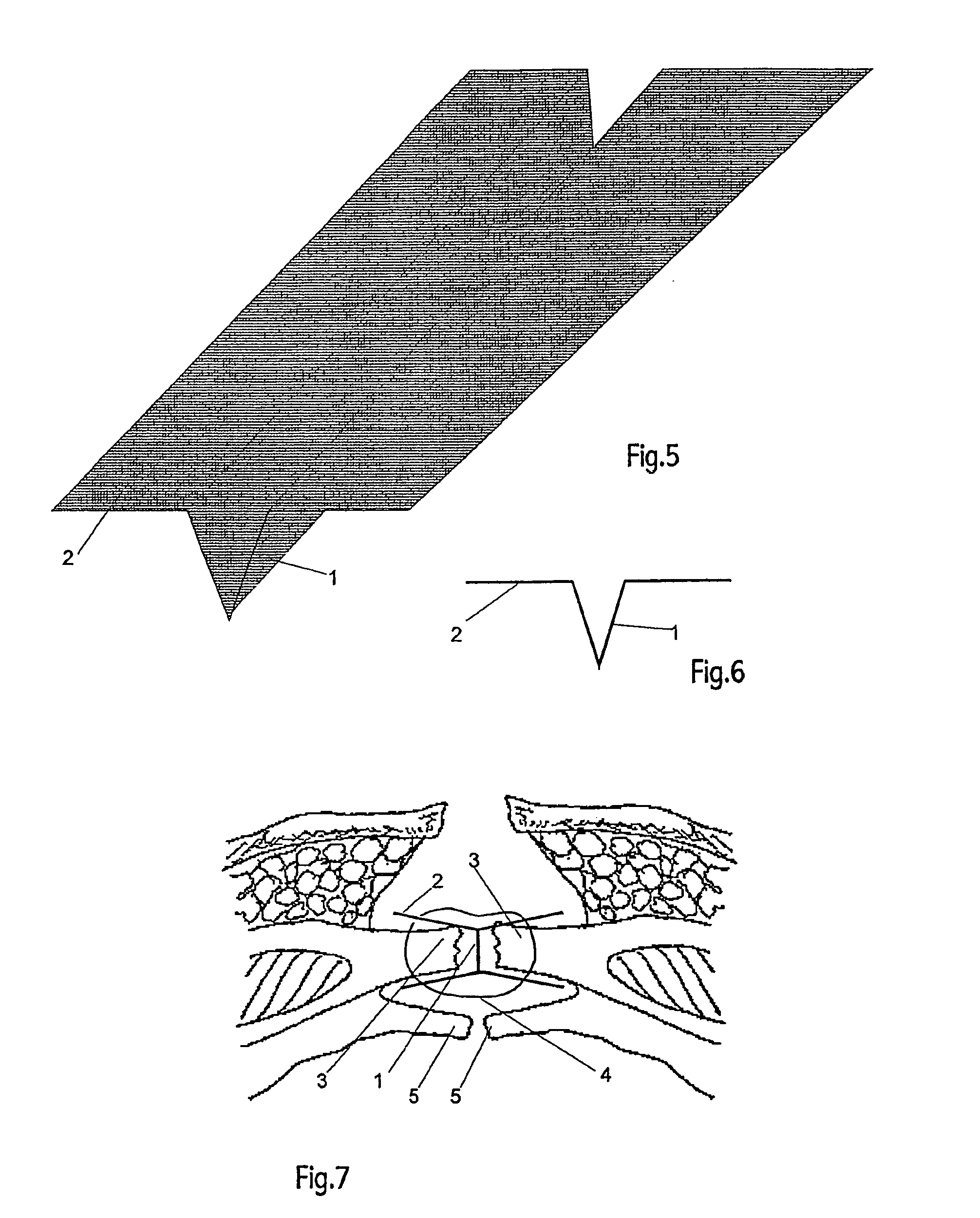Wall prosthesis that can be implanted in the center of a wound to reinforce abdominal wall closure
a wall prosthesis and abdominal wall technology, applied in the field of prosthesis, can solve the problems that all the current routine measures have failed to prove sufficient, and achieve the effects of reducing the incidence of herniation
- Summary
- Abstract
- Description
- Claims
- Application Information
AI Technical Summary
Benefits of technology
Problems solved by technology
Method used
Image
Examples
Embodiment Construction
[0018]Referring to these figures, the proposed prosthesis contains a sheet or plane of hernia resistant and flexible biotolerated material (1), preferably plastic, for example a type of polypropylene fabric in the form of an interlaced mesh with large pores. The sheet may be planar as shown. Examples of other biocompatible materials include, but are not limited to, polyamide, polyester, polyolefines and polytetrafluoroethylene. The material may be made up of fine threads with large pores, so that the connective tissue infiltrates between the pores. The plane or sheet (1) has a width that is proportional to the thickness of the aponeurosis to be joined, between whose sectioned ends it is placed, and length equal to that of the wound to be reinforced. Laid out substantially transversely to this plane or sheet, for example perpendicularly, is a second plane or sheet (2) that can exist singly as a T or V or can be double, taking the form of an H or X. This plane or sheet (2) is preferab...
PUM
| Property | Measurement | Unit |
|---|---|---|
| length | aaaaa | aaaaa |
| width | aaaaa | aaaaa |
| depth | aaaaa | aaaaa |
Abstract
Description
Claims
Application Information
 Login to View More
Login to View More - R&D
- Intellectual Property
- Life Sciences
- Materials
- Tech Scout
- Unparalleled Data Quality
- Higher Quality Content
- 60% Fewer Hallucinations
Browse by: Latest US Patents, China's latest patents, Technical Efficacy Thesaurus, Application Domain, Technology Topic, Popular Technical Reports.
© 2025 PatSnap. All rights reserved.Legal|Privacy policy|Modern Slavery Act Transparency Statement|Sitemap|About US| Contact US: help@patsnap.com



